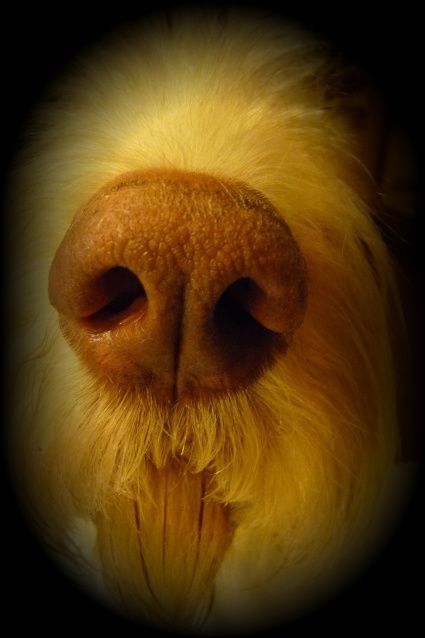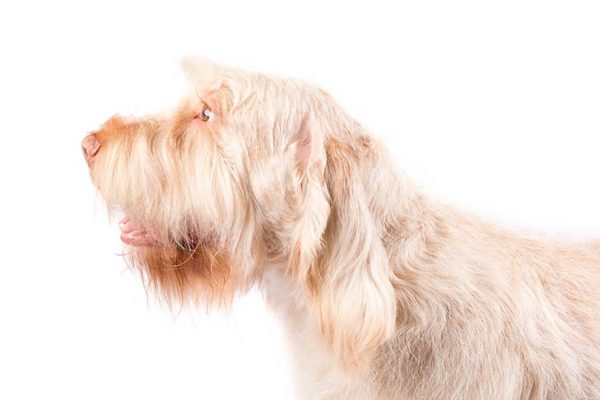
There is no missing the nose of the Spinone Italiano. Situated at the end of a long head, the slightly Roman nose is on the same line as its nasal bridge. From the front, it leans slightly out from the joint of the lips, and broadly speaking, it can be liver or pink. The nostrils are big and open, in fact, the nose is big – bulbous, even. It has quite a rounded upper edge, and it is very thick. Indeed, some call the nose leather “cushy,” but there is another word for its texture, and that is “spongy.” Out of the current 197 AKC breed standards, the Spinoni’s is the only one to include this word.

Photo appears courtesy of the AKC
“Spongy” works inside as well, and not just for the Spinone. Inside the nose of every dog are tough, curvy plates called turbinates, and inside this tough stuff is a thick, spongy membrane that holds scent-detecting cells and nerves that send “smell info” to the brain.
The Spinone is considered by most experts to have been one of the first gundogs, and it’s certainly one of the oldest ones. It predated the arrival of firearms when its job was to take a bird on the wing. The Spinone is known for its close working nature in the field and sticks close by its master using its amazing nose to scent its prey before ambushing it. In his marvelous book, Pointing Dogs: The Continentals, author Craig Koshyk points out that a Spinone might be a good blood tracker, but this kind of work isn’t considered the job of a pointing dog, so few Spinoni Italiani are put to the task. That said, a number of “Spinners” have passed the German VGP test and that takes high level tracking chops.
Image found on Pinterest and happily credited upon receipt of information
